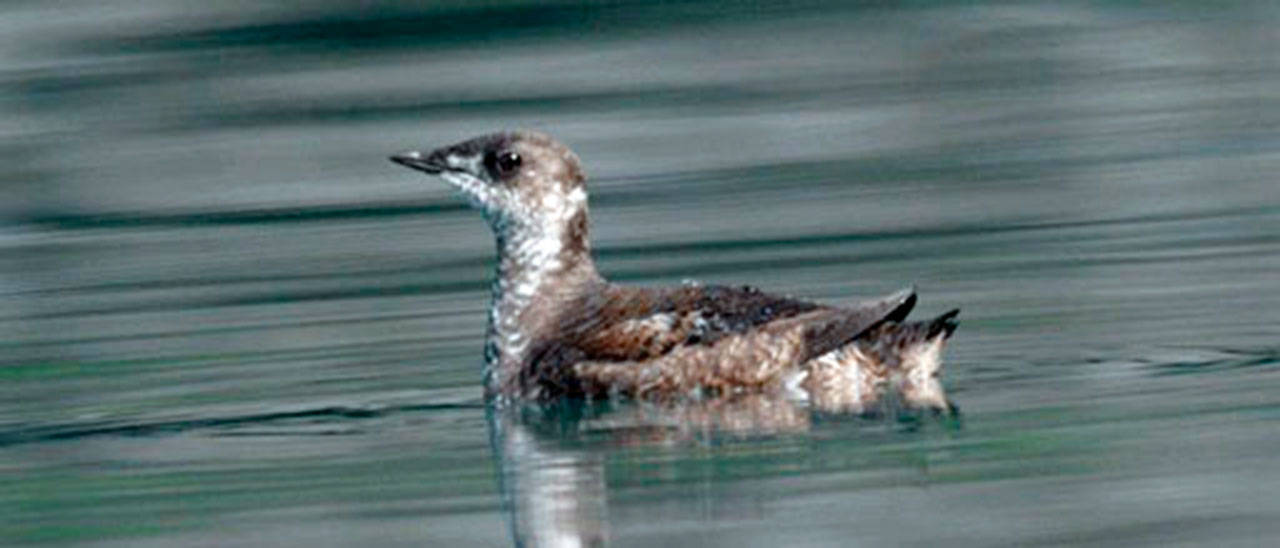PORT ANGELES — The financial impact that the state’s preferred alternative for the Marbled Murrelet Long-Term Conservation Strategy would have on West End junior taxing districts could be significantly greater than officials have said previously, according to Rod Fleck, Forks city attorney and planner.
An analysis by Fleck shows that West End districts that have trust lands comprised largely of 50-year-old trees or older would see significant impacts over the next two decades.
“Looking through the pages for Clallam County … the actual impacts are much higher than clearly stated [in the final Environmental Impact Statement,]” Fleck said in an email.
Cape Flattery School District and Clallam County Fire District No. 5 would each see a 47.2 percent reduction in operable trust lands, he said.
In Joyce, Clallam Fire District No. 4 — which last month passed a levy lid lift because of declining timber dollars — would see a reduction of 34.8 percent and the Crescent School District would see a reduction of 29.3 percent of its operable acres.
The Forks Community Hospital and EMS districts would see a reduction of 13.9 percent.
The final Environmental Impact Statement (EIS) on the plan to protect the threatened seabird was released in September and has been criticized by local officials for lacking adequate financial analysis.
The marbled murrelet is a small, fast-flying seabird that comes on land only to lay eggs and rear its young, spending the rest of its life at sea. Murrelets lay one egg per year, setting them only atop large moss-covered branches high in the forest canopy within 55 miles of saltwater.
DNR manages 14 percent of existing marbled murrelet habitat in Washington state. The U.S. Fish and Wildlife Service considers DNR-managed land in Clallam, Pacific and Wahkiakum counties to be important habitat to the conservation of the species, of which approximately 6,000 are believed to remain in Washington state.
The bird is listed as “threatened” and less than 2 percent of its population is in Washington, with 94 percent of its population living in Alaska or British Columbia, according to DNR.
Analysis in the final EIS showed the “long-term” impact would be far less than than what junior taxing districts could face over the next couple of decades.
Clallam Fire District No. 5 in Clallam Bay would lose 14.1 percent of its operable acres, Cape Flattery School District would lose 13.9 percent of its operable acres, Clallam Fire District No. 4 in Joyce would lose 6.4 percent of its operable acres, Crescent School District would lose 5.3 percent of its operable acres and the Forks Community Hospital district would lose 2.9 percent of its operable acres, according to the EIS.
“So, the impact of the taxing districts that were going to be adversely impacted is much, much higher than [Department of Natural Resources headquarters] has shared wit the [Board of Natural Resources] to date,” Fleck said in an email.
“While there is some indication that this ‘will be for a short term period’ which again has been seen as a couple of decades, I am still trying to figure out how anyone can have one of their limited revenue sources impacted from 14-47 percent on an average annual basis and not have that adversely impact the services associated with those entities.”
Fleck’s analysis is based on a presentation in November by Angus Brodie, DNR’s deputy supervisor for uplands, to the Board of Natural Resources.
Brodie used Clallam Fire District No. 5 as an example during his presentation, which depends on about $55,000 per year in revenue from its trust lands. That makes up about 21 percent of its approximately $257,000 budget, he said.
Over the next century there would be a decrease in operable acres by about 14 percent, or $7,700 per year, Brodie said.
But, when accounting for age class distribution, the impact is near 47 percent and a decrease of $25,000 per year on average, Brodie said.
That is close to 10 percent of the district’s entire budget.
The Board of Natural Resources will consider on Tuesday whether to move forward with the preferred alternative.
Clallam County Commissioner Bill Peach, who is also vice chair of the Board of Natural Resources, said he plans to ask the board to delay the decision until after the legislative session, which starts Jan. 13.
________
Reporter Jesse Major can be reached at 360-452-2345, ext. 56250, or at jmajor@peninsuladailynews.com.

